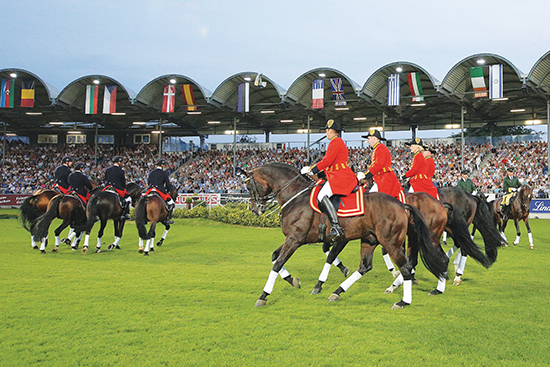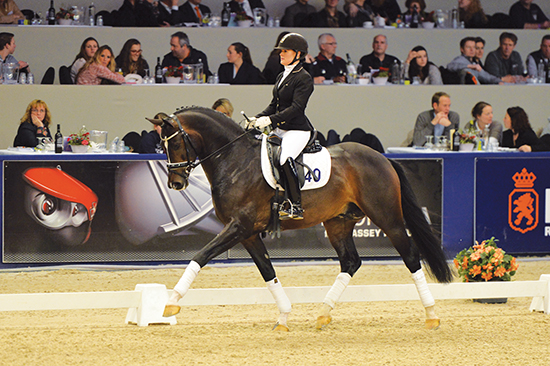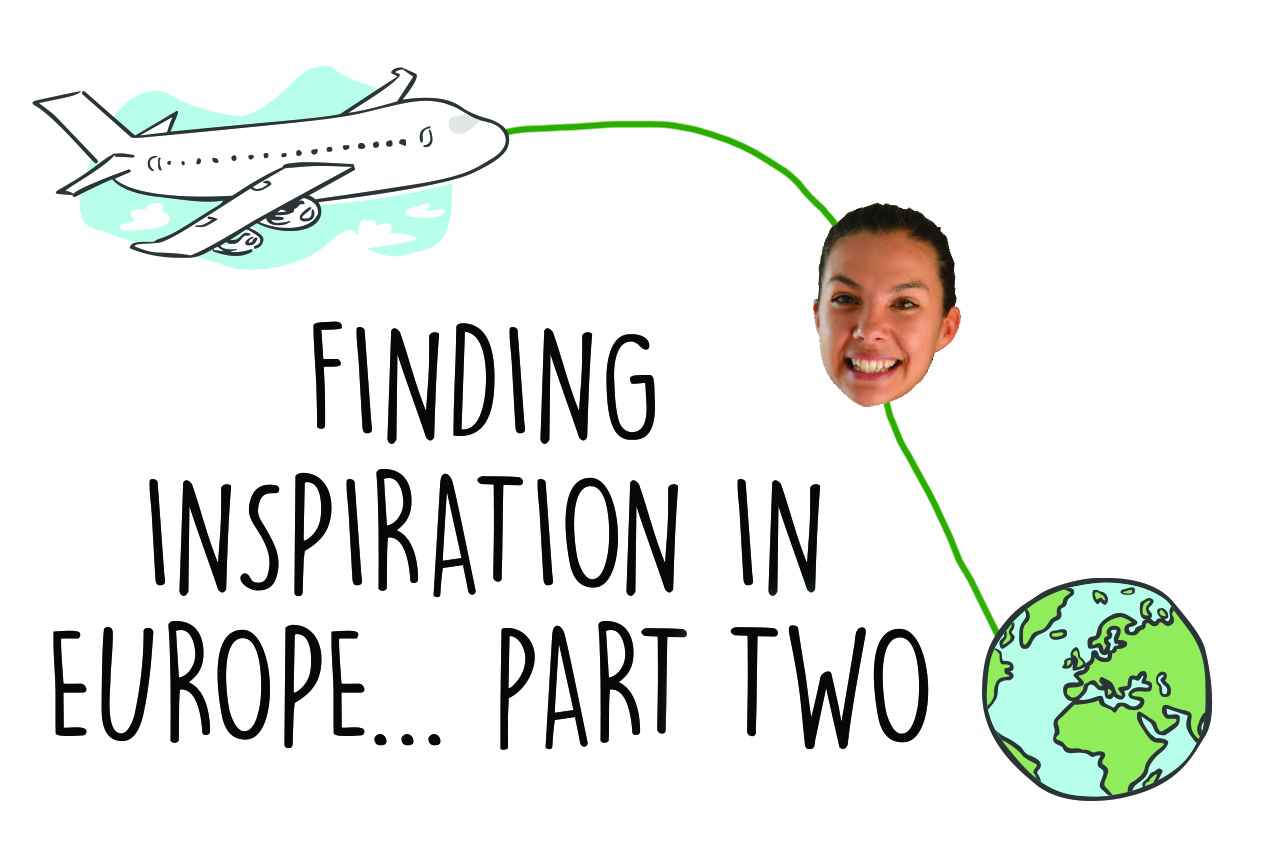 Photos: Arnd Bronkhorst
Photos: Arnd Bronkhorst
Talented Australian dressage rider, Grace Kay won the Marcus Oldham sponsored Aachen scholarship, and put her time in Europe to good use, visiting top trainers Wolfram Wittig in Germany, and Johan Hamminga and Jennifer Sekreve in The Netherlands…
As I sit here in one of Germany’s fantastic, super fast, go-everywhere trains and reflect back on the past few weeks I am absolutely astounded at how quickly it has gone. They say there is no time like the present, but trying to keep up with the present is proving to be a difficult task! After a super busy two weeks with the Wittigs in Germany I found myself at what was to be one of the most dramatic European championships seen in a long time. I’m glad that my first Aachen trip was this one, because, boy is there a lot to remember… Aside from the buzzing atmosphere, amazing shopping and beautiful venue there were top horses retiring, blood rule bell-outs, momentary score board ‘malfunctions’, Toto’s last ever dressage test, crowd boos, crowd cheers, crowd boos and cheers all at the same time, warm-up horrors, inspirational up-and-comers and of course some of the most beautiful dressage tests I’ve ever watched.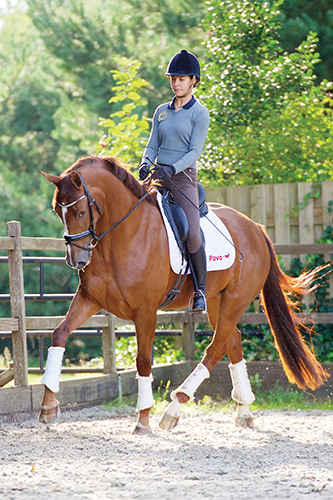
Valegro. What an unbelievable horse with a super rider. Even people from outside the dressage world can see that they are untouchable. It was only in the two weeks after Aachen when I was training with the team at Duffy Sport Horses, a professional show jumping and sales stable in Ireland, that I truly grasped the magnitude of the achievement that these two have reached.
Cooling down the horses one afternoon we were discussing how ‘good riding is good riding’ no matter what, and that even with a limited knowledge of the dressage horse’s requirements when my Irish jumping buddies watched Charlotte and Valegro, they could see an incredibly powerful horse in complete balance. They are relaxed, the test is smooth and the horse isn’t being pulled around with a jammed up neck and rider holding on looking like they are lifting dead weights at the gym. The fluency and harmony you see in Valegro is how it should be, and I think we are seeing some more like minded riders at the top which is being noticed not just from the dressage world, and that’s exciting!
Following my very exciting time at Aachen and two great weeks riding some top jumping horses in Ireland I was back on the continent, this time in Holland with master trainer Johan Hamminga and his incredible partner Jennifer Sekreve. They have a small stable filled with young horses just outside the prettiest little village. Surrounded by beautiful purple heather fields and thick green forests is Elspeet.
While the landscape was magical it had nothing on the fantastic horses they had in training! Three of the horses had qualified for the World Young Horse championships in Verden the month earlier, they had the highest scoring stallion from the Trakhener classification the previous year, a top 3-year-old who has just been broken in, and the lovely mare I would be riding Gamante D (Contango/Jazz) who was the National Dutch Champion 3-year-old mare in 2014.
Jen and Johan only had 9 horses in their stable, but considering that they do all the stables, preparing, maintenance and training themselves, without any grooms or riders, it’s an incredible operation they run! They start around 8 each morning with a few horses in the walker, their stables get cleaned and Jen jumps on and starts for the day, normally with San Amour, a really talented six-year-old gelding who has a lovely soft way of going and a sound grasp on life, which makes his training really enjoyable to watch. Even though he is only six he is showing some great piaffe and passage steps, a powerful collected canter for the pirouettes and uphill loose changes. Watching Jennifer and Johan work together is a lovely show (even through the language barrier). There’s a lot of calm repetition and with Johan in the middle and Jen working around him it’s easy to see why some people call dressage horsey ballet!
I got to ride later that morning and it was a great introduction into the way Johan teaches. Each lesson always starts in the walk. He explained that they must learn to relax and work right from the start even if they are a bit hot and jumpy. He reasoned that if you only train the walk at the end when the horse is worn out and they have calmed down, then you only get a better walk because they are tired and allowing you to walk them. They must accept the work and your aids right from the beginning not just because they are tired, so they can actually learn how to walk and how to march through the tension.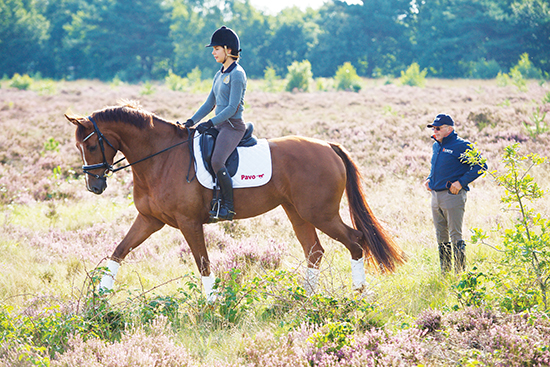
The work in the walk was all about accepting the aids, listening to and moving off each leg, through leg yields both on the wall and across the diagonal. We focused on how much pressure you need to apply to get a reaction. Asking twice was not the ideal option and if they were slow off the leg then we gave a quick tap with the whip, repeat the aid and try for a quicker response. The walk was also used to loosen the horse’s muscles, get more softness and lengthening through the top line and create more freedom in the body. We would often spend ten to fifteen minutes in the walk just bending to the outside, using outside leg, making sure they moved off the outside leg and pushed into the opposite rein, then slowly straightening, ensuring they were still reaching into the contact and changing the bend to the inside. The walk was used to set the rest of the work up, to get them really responsive, reaching into the contact and softening up. This could be seen just before the trot work started when the leg yields became more fluent, the mare was more responsive off my leg aids, reaching forward into the contact and her over-track had significantly increased.
As Garmante was still very young, the initial trot work was always really forward. Her trot for the in-hand work the previous year was quite spectacular but it was very up and down and didn’t have a lot of softness through the body. With this in mind, when starting her ridden work we would use the forward movement to get her to lengthen and loosen the stride and soften her neck down a little. The forward momentum Johan asked for, also helped her to maintain the balance whilst working with a lower neck and more consistent contact. If I didn’t have her forward enough, then you could really feel her start to lose her balance, she would lean her body slightly in, her poll would drop and she would go behind the vertical and I would lose the consistency in my hand.
Once she was accepting the forward aids and reaching into a steady contact then we started to implement small changes in tempo. The first day when Johan said ‘and now she is forward and consistent in your hand we start some tempi changes’ to say I was shocked is an understatement! Here I was riding a beautiful but relatively green horse that I haven’t even cantered and we are gearing up for tempi changes… What was going on!? I must have had that dumbfounded look on my face, as I just kept trotting around the arena Johan suggested again that I start by slowing the tempi for a few strides and it finally clicked; tempi changes were in fact tempo changes it had just been lost in translation! Changing the tempo, I could manage that!
The tempo changes were used to increase their responsiveness to the aids and make the horse really aware of what we were asking. Even though we were working on getting a positive reaction with the smallest aid possible (a positive reaction being anything given in a forward direction) through small transitions within the pace, the aim was always to have a forward consistent contact. If the contact became unsteady, normally due to a loss of balance when the pace was slowed, then we would immediately go forward, re-establish a connection and try again. While it all sounds quite drastic, the changes were often quite small and when watching Jen work with her five-year-old stallion Forty (who was just coming back into work after a few weeks rest from the World YH champs) you had to watch particularly closely to notice them at all.
After a few days working together I started to notice that it was all coming together a bit more. I could get her into my hand and working from behind earlier on in our session, our ‘tempi changes’ were becoming more fluent and consistent and another of the points that is strongly emphasised in their young horses training: the straightness, was more controlled. Straightness is achieved by Johan through control of the shoulders, he emphasised that if you lost control of the shoulders then you lose control of the whole horse. When asking for straightness he would make sure the neck was completely in front of the body, often times this would feel almost as though we had slight flexion to the outside, when combined with the leg however (pushing forward when required) it created a really nice stable connection and even though there didn’t feel like there was a lot of bend through the corners she was actually able to maintain the longer steps, softer top line and secure connection, even when we slowed a little and asked for a bit of collection through the turns.
These phases would all be performed and repeated slowly and quietly until there was a continuous positive reaction from each aid that was applied. I like this approach in that it gives the horses time to understand exactly what is required of them. We as riders however have to be really consistent in what we ask which can be tricky at times especially if we focus on fixing too many things at once. This is why all the exercises, changes in tempo and leg yields we did with Gamante were aimed at getting her looser through the body, even though we still want quick reactions and a fluent horse that listens to the aids, the goal we worked towards with her was always kept simple.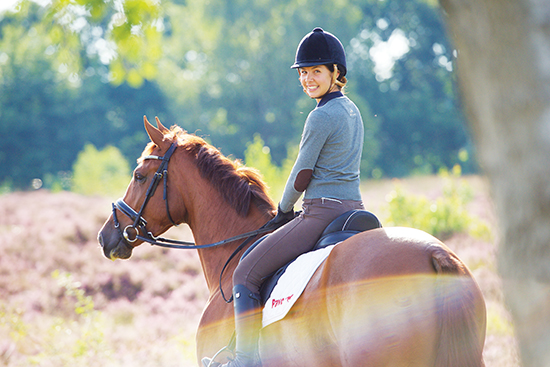
The canter work with Garmante was similar to the trot, we worked her forward but kept the neck a little higher this time, I had to focus on staying a little more back in my position to allow her wither to come up and for her to step her inside hind right under my seat which would be our centre of gravity. We worked through some tempo changes again and it was interesting to see how reactive to my body position she was, as soon as I would draw my body up she would wait as best as she could, which was great to feel in a young horse! After the canter we had a short walk break to let her relax and recover before working some more on the trot.
I always enjoyed this section because she started to really soften and work, the trot felt lovely to sit to and I usually found myself smiling as we floated around the arena! A few leg yields in the trot were started and Johan instructed us to use the entire arena, making sure she was really stepping quickly behind, off the leg. If she was getting too crooked (often leading with the shoulders too much) then I would straighten with the outside rein and leg and then start again. Moving off the right leg was a bit ‘stickier’ she would often get muddled and stuck, but quietly bringing her back to walk, using the leg yield down the wall and then starting again would make the leg yield smoother and help her understand what was required. We always ended the lesson asking her to stretch down and it was great to feel the difference in her paces between the start and the end of the session, Johan often commented that she was stepping through more behind in both the trot and walk and it was nice having tangible improvements!
At the end of the two weeks I felt right at home, working with Jen and Johan was such a pleasure and I learnt so much that I didn’t want to leave. They gave me incredible experiences; watching their Dutch national championships and a quick day trip to Germany for the Bundes (still can’t get believe a two hour car trip and I’m in a different country!), cooking with Jen in the afternoons, watching Johan teach late into the evening, being surrounded by beautiful well mannered young horses and feeling first hand the quality of horses they are producing, watching a KWPN stallion licensing and learning about the different systems they have in place, it was all fascinating.
Johan and Jennifer made me feel incredibly welcome – combine this with what I have learnt – and I am feeling very very lucky indeed.
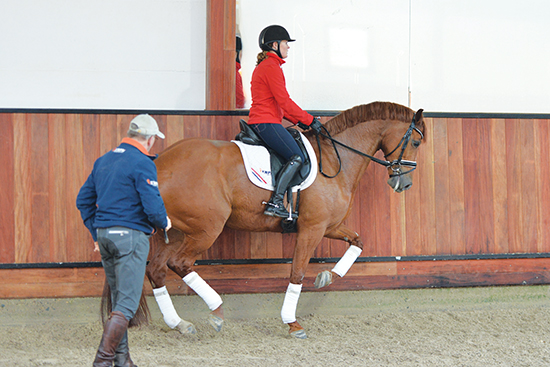 JOHAN HAMMINGA – A REAL MODERN MASTER
JOHAN HAMMINGA – A REAL MODERN MASTER
In a world of self-promoting super trainers, Johan Hamminga is an exception. His stables are low key, functional, the sort of place that quietly says: ‘horsemanship’.
Sure Johan has had his share of starring roles. Working for the KWPN, he was the test rider for some of the super star Dutch stallions (including Jazz), and has been the trainer to scores of young riders, while helping prepare the Dutch young horse contingent to go to the World Championships. Oh yes, and he trained Adelinde Cornelissen right up to the time when she took Parzival to his fourth Grand Prix – and her first international show, Aachen – and beat everyone except Isabel Werth and Satchmo!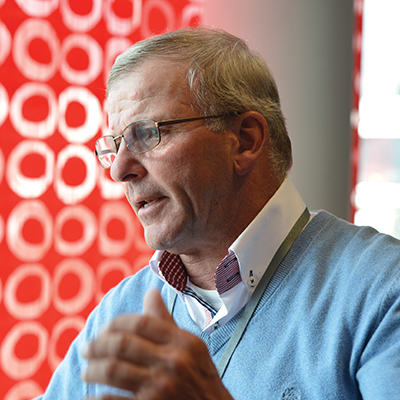
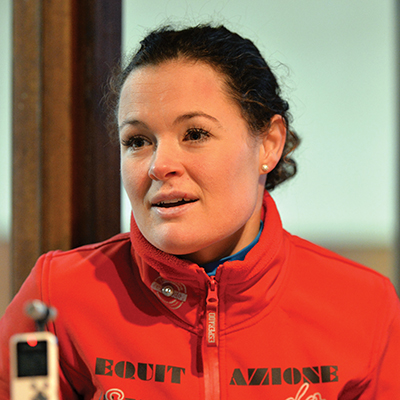
But to really appreciate Johan, you need to sit in the corner of his indoor school and watch him work with his partner, Jennifer Sekreve. Jen is one of the most beautifully correct riders in the world, and the horses the pair produce together are a very model of how correctly schooled dressage horses should go. It was a pleasure to arrange for a rider as talented as Grace Kay to share their wisdom.
This article first appeared in the January 2016 issue of THM.

